Grant Fidelity 50
Prologue.
The triode type 50. I have (had) many amplifiers using that triode. All Single Ended. Love them. So when I saw
a new version built in a globe shaped glass bulb with a mesh plate just like the original from the 1920's, I was
intrigued. The originals are really hard to get and when seen they will cost a little fortune. As said, many
single ended type 50 amplifiers have had a place in my audiorack all with good memories. Different types 50
as well, globe shaped originals with solid plate, both small and big ST-shape, European (Philips) type 50,
Shuguang globes and EML type 50. All good to very good sounding types 50. A few years ago I heard original globe
50's with mesh plates also in a Single ended design. Beautiful holographic performance is what I remember best.
So I decided to buy a pair of these newly built mesh plate globes by Grant Fidelity. An email was sent out to Rachel
and two weeks later the package was delivered. Let the game begin.
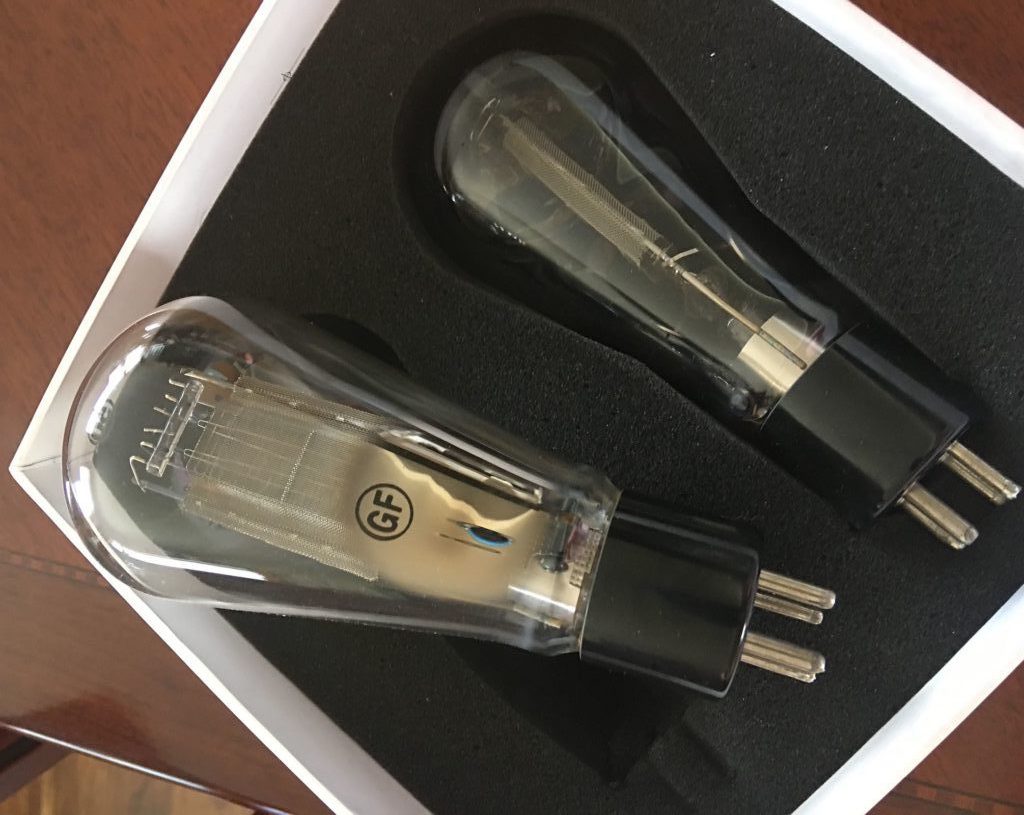
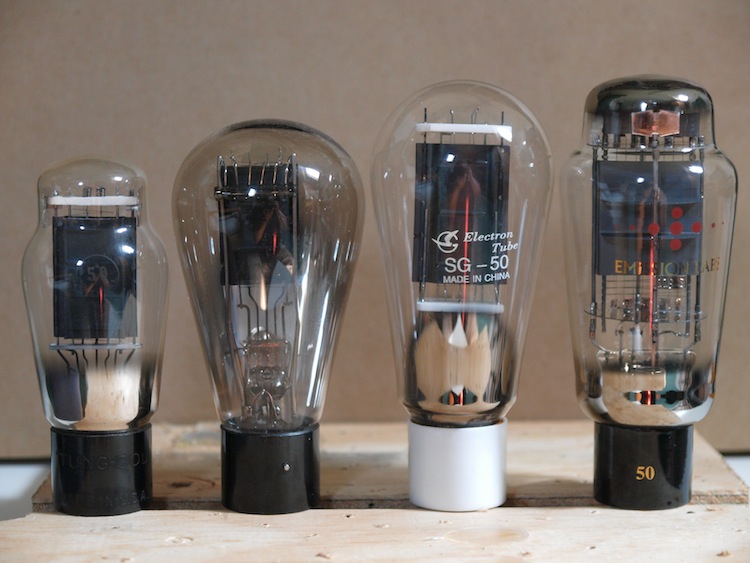
The type 50.
First time I read about these triodes was in Sound Practices, an underground magazine from the 1990's, only
available through mail (no internet at that time). The elusive type 50, the article was called as you can
see below. At that time I had contact with George Fathauer♱, founder of Antique Electronic Supply, and bought
a pair globe Continentals for about 350 USD. Including P&P and customs. Imagine that nowadays. I built myself a
dc-coupled amplifier (the 50 is picky on grid circuit resistance) and got really happy. In the following years
I collected the bigger ST (RCA) and smaller ST (Philco), and a pair scarce Philips type 50's (lasted 6 years
to get a pair). In 2013 the EML 50 was auditioned and compared to the other 50's and a
Shuguang globe as well (a loaner at that time). So, how would the GF50 compare to these?
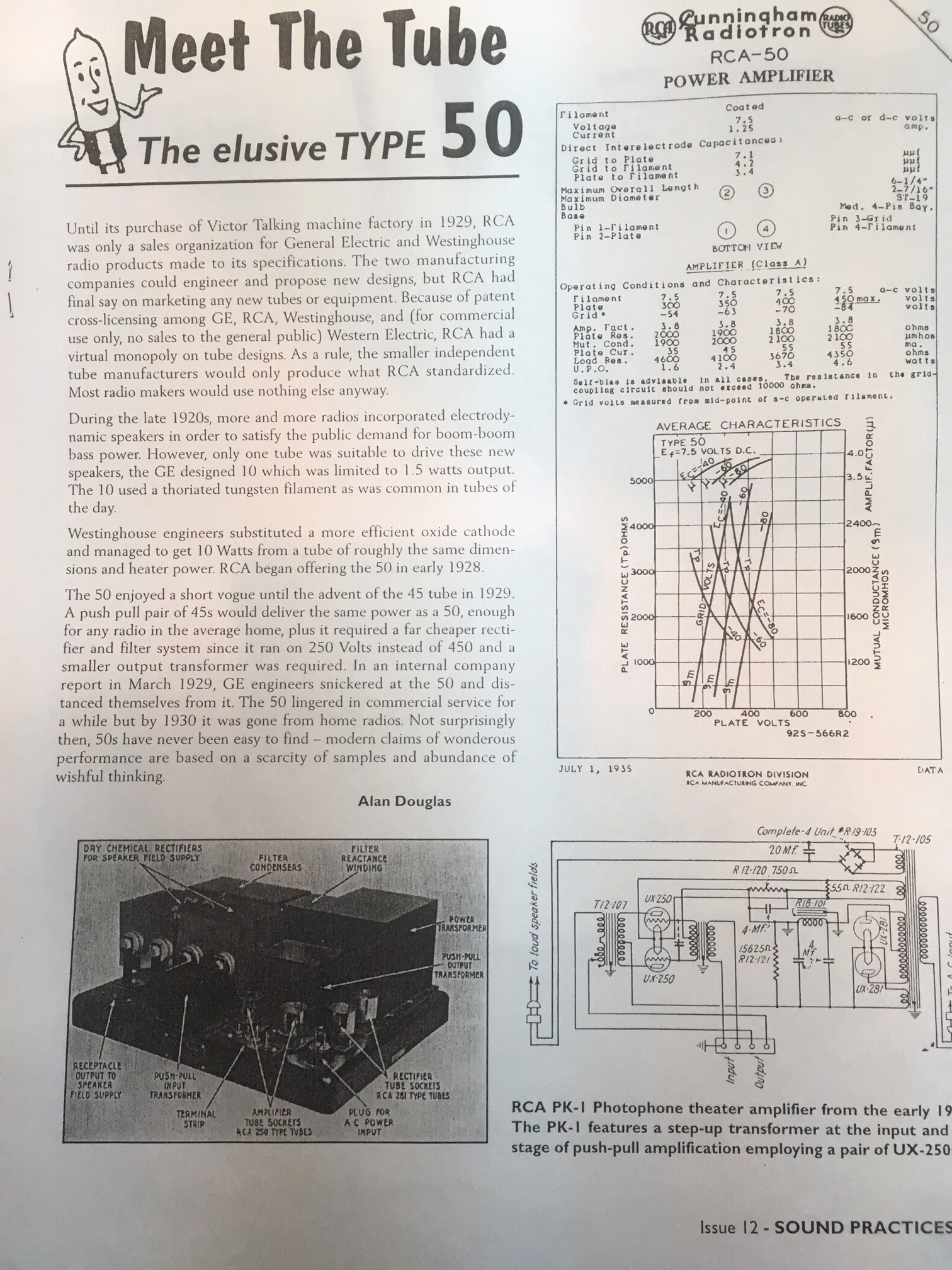
Copy of the article in Sound Practices.
How to use it?
Since I sold the Single Ended type 50 amplifier (I do make mistakes as well), I needed an other one. Luckily I just
finished a Single Ended Telefunken RV218 using a separate power supply, I "just" had to build me a
second amplifier using that power supply. Using an input transformer for gain and the AD101 interstage connected
to the 50, the second amplifier was designed and built. High voltage from the power supply is limited to 450 Volts so the 50
will not be able to deliver its almost 5 Watts output power, but I managed to squeeze out a little over 3 Watts.
Using a folded open baffle design with 98dB efficiency field coil units, this proofed not to be a problem.
Time to listen to the GF50.
Listening.
Aesthetics are marvellous. Nice dark-red glow of the filament just like the original and no blueish glow in
the glass bulb what proves good vacuum. Looking at one of the pair, you can see the filament not showing a tight
"M", looking not as neat as it could be. However it does not affect its operation point nor performance,
so I decided not to return them.
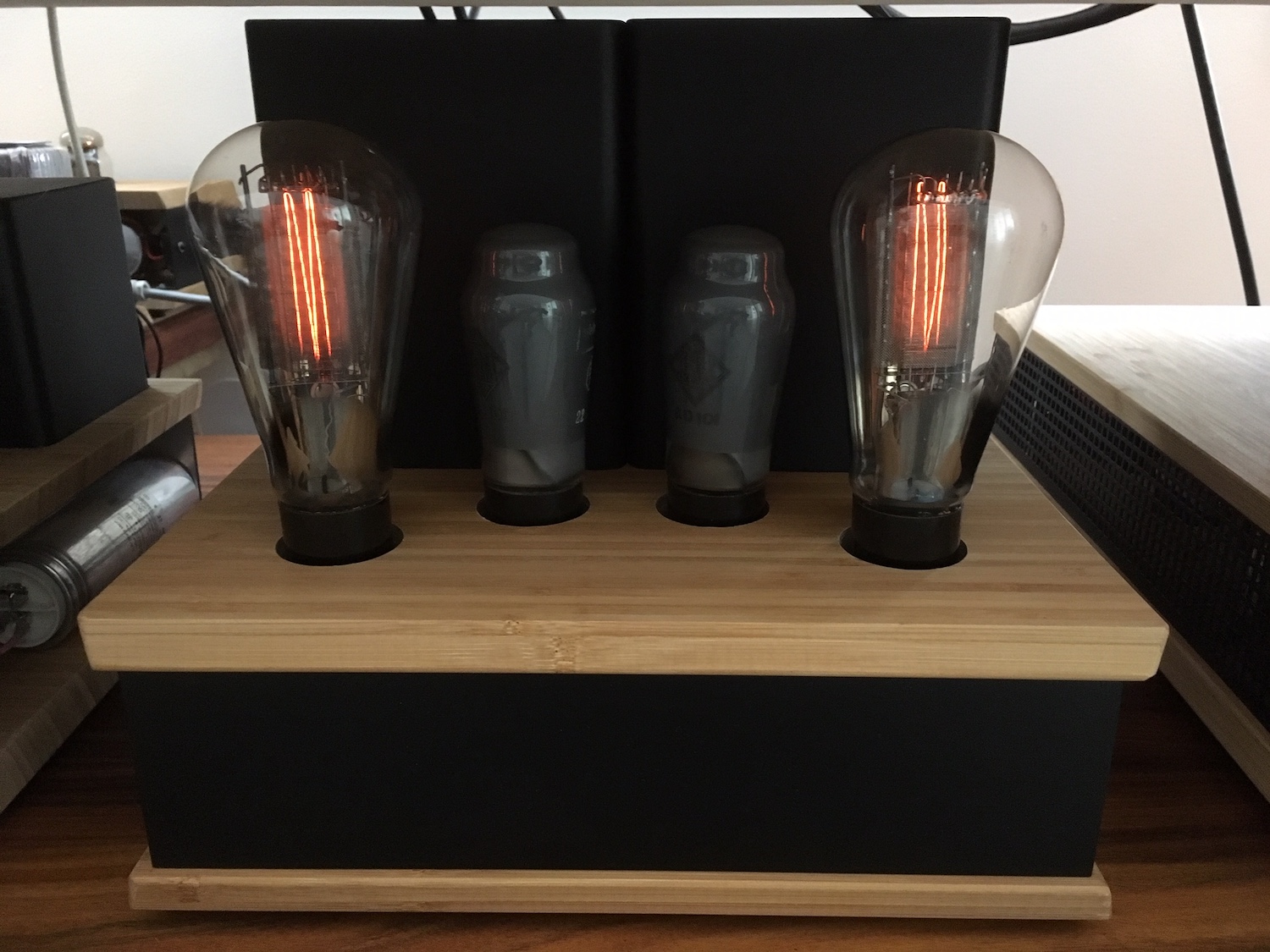
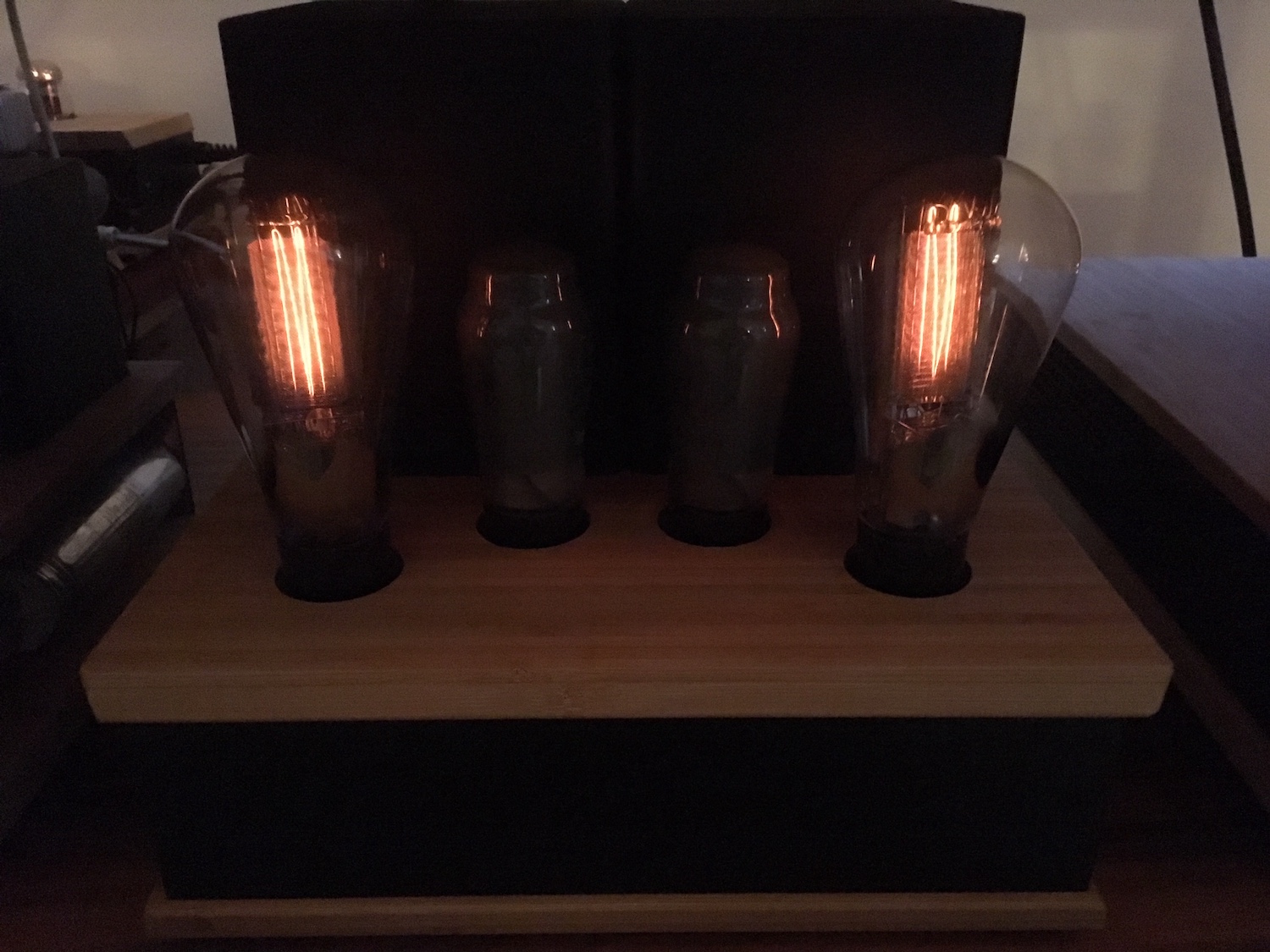
The GF50 Single Ended amplifier, during day- and nighttime
So how do they compare to the other 50's? Well, listening to the amplifier many nights I came up with the following
assessment, which, of course, is totally subjective. 1) Continental globe solid plate, 2) RCA ST big bottle, 3) GF50,
4) EML50, 5) Philips 50, 6) Philco ST small bottle. In here I'd like to point out that in my 50 shootout the panel was in
favor of the EML. At that time I had open baffle speakers with PHY-HP KM30 units which thrived on somewhat more power.
Being the panel myself, listening to field coil speakers, I have a preference for the older triodes for their organic
sound. Since my goal was to compare the GF50 to its reference, the globe 50, main focus will be on these.
Well, at GF they did a marvellous job as the characters are just about the same: A lush organic presentation with good tone.
Both the original globe and the big ST shape have a tad more tight bass where the globe has slightly better 3D presentation.
The GF50 has just about the same tonal character which I very much like, but is a bit more light on the bass.
Spaciousness is about the same as the original globe.
So again it is a matter of personal taste and how it matches in your setup. Comparing the GF50 directly to a genuine
globe mesh-plate 50 was not possible since I have none at hand. Talking to a friend who owns a pair, he assured me that
those have better 3D presentation than the globe solid plates whilst having the same bass performance. So adding that
to the list, the GF50 comes out fourth. Again, differences are subtle but noticeable. However looking at prices,
difference are not subtle. Globe mesh plate 50's will probably set you back around 2000€, a pair ST big bottle 50's
around 800€ and globe solid plate 50's around 1000€. All used!. EML50's go for almost 700€ and
GF50's will cost 600$ the pair. New!.
Conclusion.
Winners are Grant Fidelity and EML. I would put my money on these. You get new tubes, with warranty. If you like the sound of the
old triodes go for
Grant Fidelity, if you do favor a bit more modern sound,
EML would be your choice. Comparing the Grand Fidelity 50 to the originals, the originals will set you back a heap of money
for used pairs, whilst difference in sound will be subtle. You get the same character for far less money, and new. As a
runner up I mention the EML's. They do not exactly match tone and spaciousness like the Grant Fidelities and originals,
but do breath about the same character with more tight bass and highs. A bit more "modern" sound. Available
new as well. Take your pick.
One thing to mention, the Grant Fidelity type 50 was a one batch production, so only a limited stock is available. No idea how
much pairs are left at this time..
